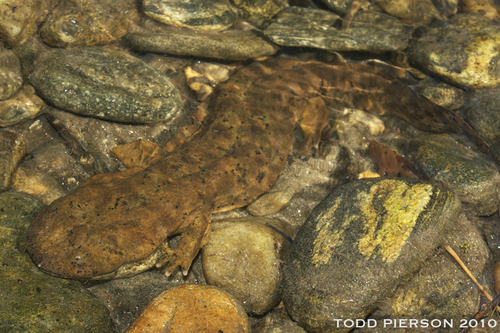
Hellbender
Meet the Hellbender! This unique, large salamander thrives in swift rivers of the eastern U.S., distinguished by its wrinkly skin and nocturnal lifestyle. As an apex insect predator, it balances aquatic ecosystems, showcasing nature's intricate web. A true marvel of the waterways!
1.4979 - 2.4948 kg
Weight
Length: 30 - 76 cm
Size
Brown, Orange, Tawny
Color
6 years
Age of Sexual Maturity
Vulnerable
Conservation Status
Decreasing
Population Trend
Characteristics
Cryptobranchus alleganiensis, commonly known as the Hellbender, is a large aquatic salamander native to the eastern United States. It inhabits fast-flowing, clean rivers and streams and is known for its flattened body, loose skin folds, and nocturnal habits. This species plays a crucial role in aquatic ecosystems by helping control insect populations.
Distribution Range of the Hellbender
Cryptobranchus alleganiensis, commonly known as the Eastern Hellbender, is native to the eastern United States. Its geographical distribution includes the Appalachian and Ozark regions, spanning parts of states such as New York, Pennsylvania, Ohio, Indiana, Illinois, West Virginia, Virginia, North Carolina, Kentucky, Tennessee, Georgia, Alabama, Arkansas, and Missouri.
Hellbender's Habitat
Environmental Conditions
The Eastern Hellbender inhabits clear, fast-flowing streams and rivers with rocky substrates. These habitats are typically found in regions with temperate climates, characterized by cold, oxygen-rich water. The presence of large, flat rocks is crucial as they provide shelter and breeding sites.
Ecological Niche
Hellbenders occupy an ecological niche as aquatic predators, feeding primarily on crayfish, although they may also consume small fish and insects. They play a vital role in maintaining the ecosystem balance by controlling crayfish populations. The species is well-adapted to its environment with a flattened body that aids in slipping under rocks and a permeable skin that facilitates respiration in oxygen-rich water.
Copyright @ Nature Style Limited. All Rights Reserved.
 English
English